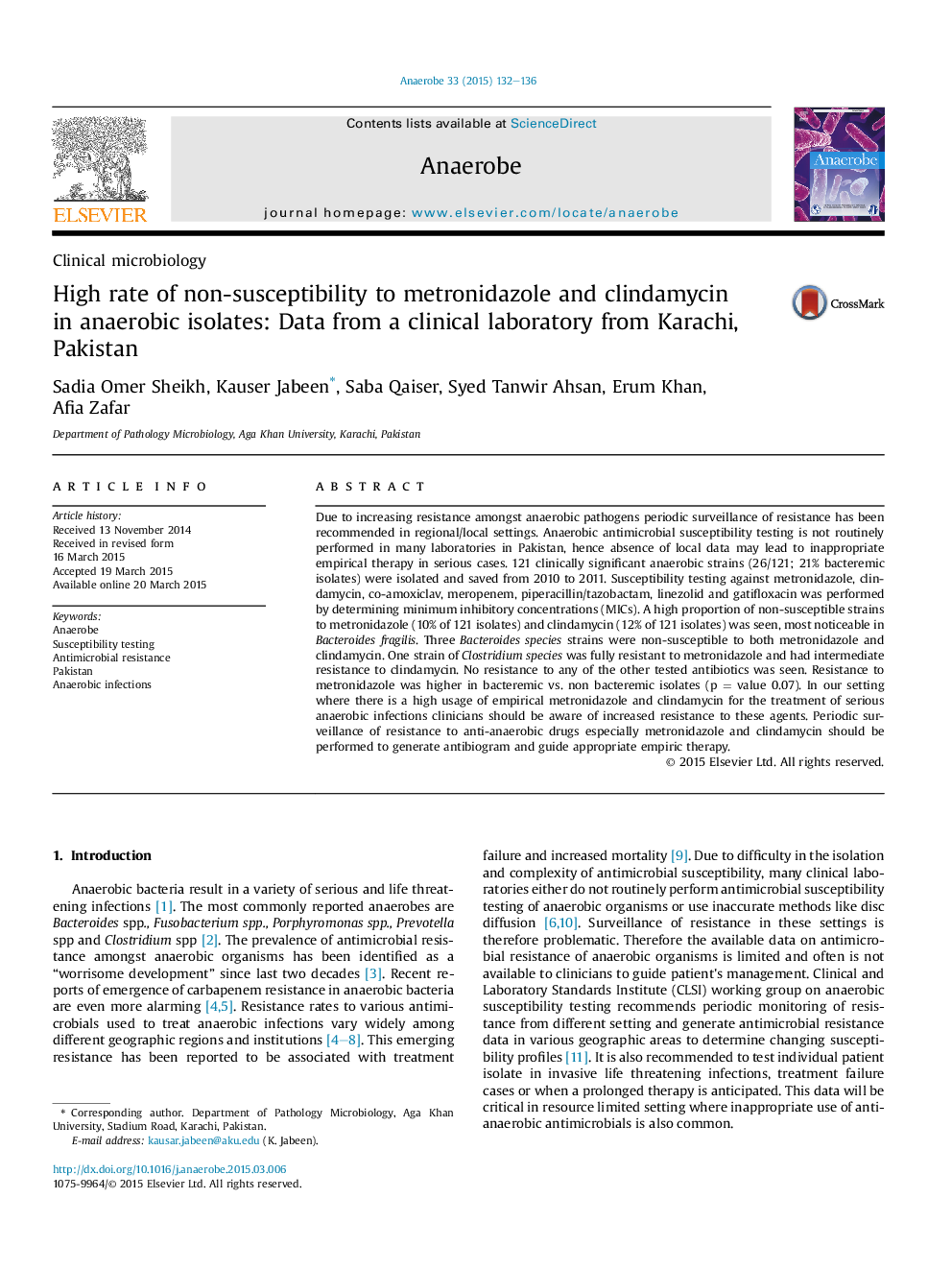| کد مقاله | کد نشریه | سال انتشار | مقاله انگلیسی | نسخه تمام متن |
|---|---|---|---|---|
| 3394912 | 1592830 | 2015 | 5 صفحه PDF | دانلود رایگان |
• First study reporting anaerobic antimicrobial susceptibility data from Pakistan.
• High proportion of metronidazole and clindamycin non-susceptible strains.
• Resistance to metronidazole was higher in bacteremic vs. non bacteremic isolates.
Due to increasing resistance amongst anaerobic pathogens periodic surveillance of resistance has been recommended in regional/local settings. Anaerobic antimicrobial susceptibility testing is not routinely performed in many laboratories in Pakistan, hence absence of local data may lead to inappropriate empirical therapy in serious cases. 121 clinically significant anaerobic strains (26/121; 21% bacteremic isolates) were isolated and saved from 2010 to 2011. Susceptibility testing against metronidazole, clindamycin, co-amoxiclav, meropenem, piperacillin/tazobactam, linezolid and gatifloxacin was performed by determining minimum inhibitory concentrations (MICs). A high proportion of non-susceptible strains to metronidazole (10% of 121 isolates) and clindamycin (12% of 121 isolates) was seen, most noticeable in Bacteroides fragilis. Three Bacteroides species strains were non-susceptible to both metronidazole and clindamycin. One strain of Clostridium species was fully resistant to metronidazole and had intermediate resistance to clindamycin. No resistance to any of the other tested antibiotics was seen. Resistance to metronidazole was higher in bacteremic vs. non bacteremic isolates (p = value 0.07). In our setting where there is a high usage of empirical metronidazole and clindamycin for the treatment of serious anaerobic infections clinicians should be aware of increased resistance to these agents. Periodic surveillance of resistance to anti-anaerobic drugs especially metronidazole and clindamycin should be performed to generate antibiogram and guide appropriate empiric therapy.
Journal: Anaerobe - Volume 33, June 2015, Pages 132–136
